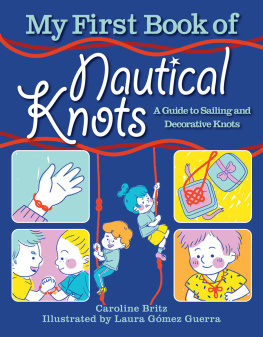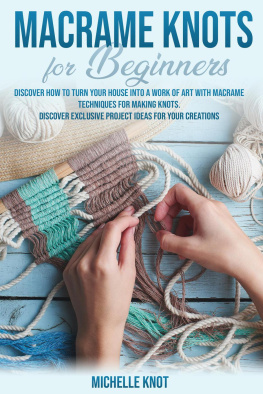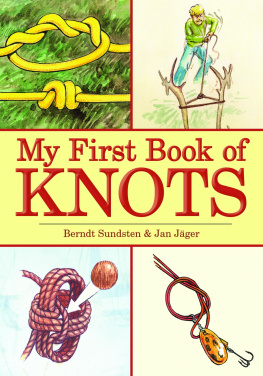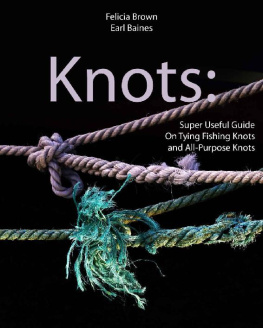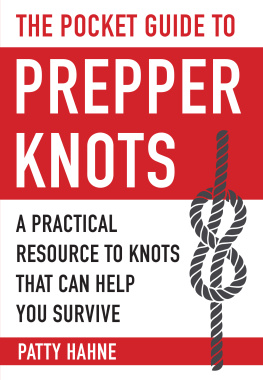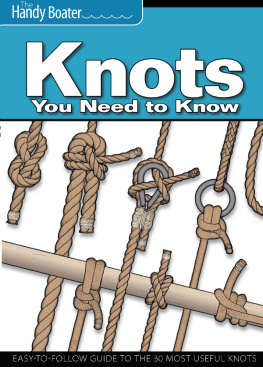Knots, Knots and More Knots
The Complete Guide Of Knot Making
Indoor, Outdoor And Sailing Knots
By: Andrew Williams
FREE BONUS: Click The Link Below To Receive Your Bonus
https://publishfs.leadpages.co/pangea-health/

Copyright 2016 - All rights reserved.
In no way is it legal to reproduce, duplicate, or transmit any part of this document in either electronic means or in printed format. Recording of this publication is strictly prohibited and any storage of this document is not allowed unless with written permission from the publisher. All rights reserved.
The information provided herein is stated to be truthful and consistent, in that any liability, in terms of inattention or otherwise, by any usage or abuse of any policies, processes, or directions contained within is the solitary and utter responsibility of the recipient reader. Under no circumstances will any legal responsibility or blame be held against the publisher for any reparation, damages, or monetary loss due to the information herein, either directly or indirectly.
Respective authors own all copyrights not held by the publisher.
Legal Notice:
This book is copyright protected. This is only for personal use. You cannot amend, distribute, sell, use, quote or paraphrase any part or the content within this book without the consent of the author or copyright owner. Legal action will be pursued if this is breached.
Disclaimer Notice:
Please note the information contained within this document is for educational and entertainment purposes only. Every attempt has been made to provide accurate, up to date and reliable complete information. No warranties of any kind are expressed or implied. Readers acknowledge that the author is not engaging in the rendering of legal, financial, medical or professional advice.
By reading this document, the reader agrees that under no circumstances are we responsible for any losses, direct or indirect, which are incurred as a result of the use of information contained within this document, including, but not limited to, errors, omissions, or inaccuracies.
Introduction
Chapter 1: Indoor Knots
Chapter 2: Outdoor Knots
Chapter 3: Sailing Knots
Chapter 4: Necktie Knots
Chapter 5: Fishermans Knots
Chapter 6: Decorative Knots
Chapter 7: Other Knots
Conclusion
Introduction
Knots are an integral part of life for all of us, their use often starts when a young child begins to play basic games with string and then further develops when they learn to tie their shoelaces. We use knots in many areas of everyday life although many people have difficulty constructing even the most basic knots correctly. From the very simple and practical half hitch or square knot to intricate and very fancy decorative knots used in dressmaking, embroidery and leather work. Knots are used in one form or another to join or secure objects in many parts of the home, garden, workshop and office. All types of people at all levels from housewives to surgeons, executives, farmers, shopkeepers, teachers, builders, engineers and sailors all use and make knots. Many children learn how to make basic knots during activities like Boy Scouts and Girl Guides, but for other people this simple skill eludes them.
The earliest evidence found of people using knots dates from about 500,000 years ago, in the form of spherical stones, these, it is thought were most probably used as bola weights when hunting and must have been secured or tied on in some way (i.e. knots). Other evidence of early knots comes from 300,ooo years ago with the finding of perforated objects such as beads and pendants dated from about this time. Because of the organic and therefore biodegradable nature of the actual string, rope or cordage used, (hair, wool, sinews, skins and vegetable fibers and the like) no specimens have yet been found.
As wildlife enthusiasts know, wild gorillas that have never been near man are able to make and use complete knots such as granny and reef knots. This suggests that using and discovering functional knots predated that of using fire and the wheel, basically, knot tying started before the evolution of modern man began.
Well preserved bows and arrows from the Paleolithic area about 24,000 B C have been found that were made using cordage, secured with knots and also from the same era archeologists have found well preserved figurines that show belts made using cords tied with knots that suggests that a variety knots were known during this time period.
Apart from their purely functional uses, knots from early times were used as an important part of the arts of magic, medicine and a large variety of religious activities. There are many cultures who used intricate knot designs to record their history, to tell stories, and for counting or mathematics, as well as for purely decorative purposes.
A good well-made knot can save your life if youre in a survival situation, during a rescue or when performing first aid. A knowledge of knots is essential when securing a load, towing, climbing, lifting weights or working over water, because a poorly made or using the wrong knot can be dangerous as knots can slip or undo causing accidents.
Knots can be made in a multitude of different ways; they are often used to connect 2 or more items together from an endless array of different types of twines, threads, strings, ropes, wires and chains, made from natural items such as cotton, wool, hair, catgut, silk, hemp, flax, animal skins (thongs) as well as many man-made products such as nylon, polyester and metals such copper aluminum, steel, silver gold and other precious metals.
Every culture has its own selection or types of knots that have been used by and passed down from generation to generation. A well-tied knot is often considered to be a true work of art. Some knots have unusual names such as a "hangman's noose" or "wagoneer's hitch" (many people know this as a truckie or truckers knot), these names give you a glimpse into the history of the knot and how they came to be. They can be used with a rope to handcuff a burglar, lasso a steer or make a ladder, mend or fabricate clothing and bedding.
John Smith of Pocahontas and James Town fame published a manual for seamen called A Sea Grammar in 1627 which had a section on splicing and knot tying, this manual suggests that a sailor only need to master and rely on 3 knots, The Sheepshank Knot, the Wall Knot and the Bowline Knot.
This book gives a practical guide to help you to learn how to tie some basic knots safely and securely as well as ideas on how to choose the right rope and knot for the task you have as every experienced outdoors man (and Woman) knows, there are right and wrong knots for certain jobs.
Chapter 1: Indoor Knots

Thumb Knot or Overhand Knot
The thumb knot is one of the simplest types of knot, it can be used to tie off the end of a rope to stop it fraying, to mark off units (place a knot every foot, yard, meter etc) or as a stopper to stop ropes slipping (place the rope through a snug hole and form this knot to prevent the rope slipping back through).
To make the knot;
- Form a loop and pass the end through it and then pull it tight to form the knot.
- If a larger stopper knot is required, the first turn can be followed by a second to create a larger stopper knot, the double stopper knot.

Next page


